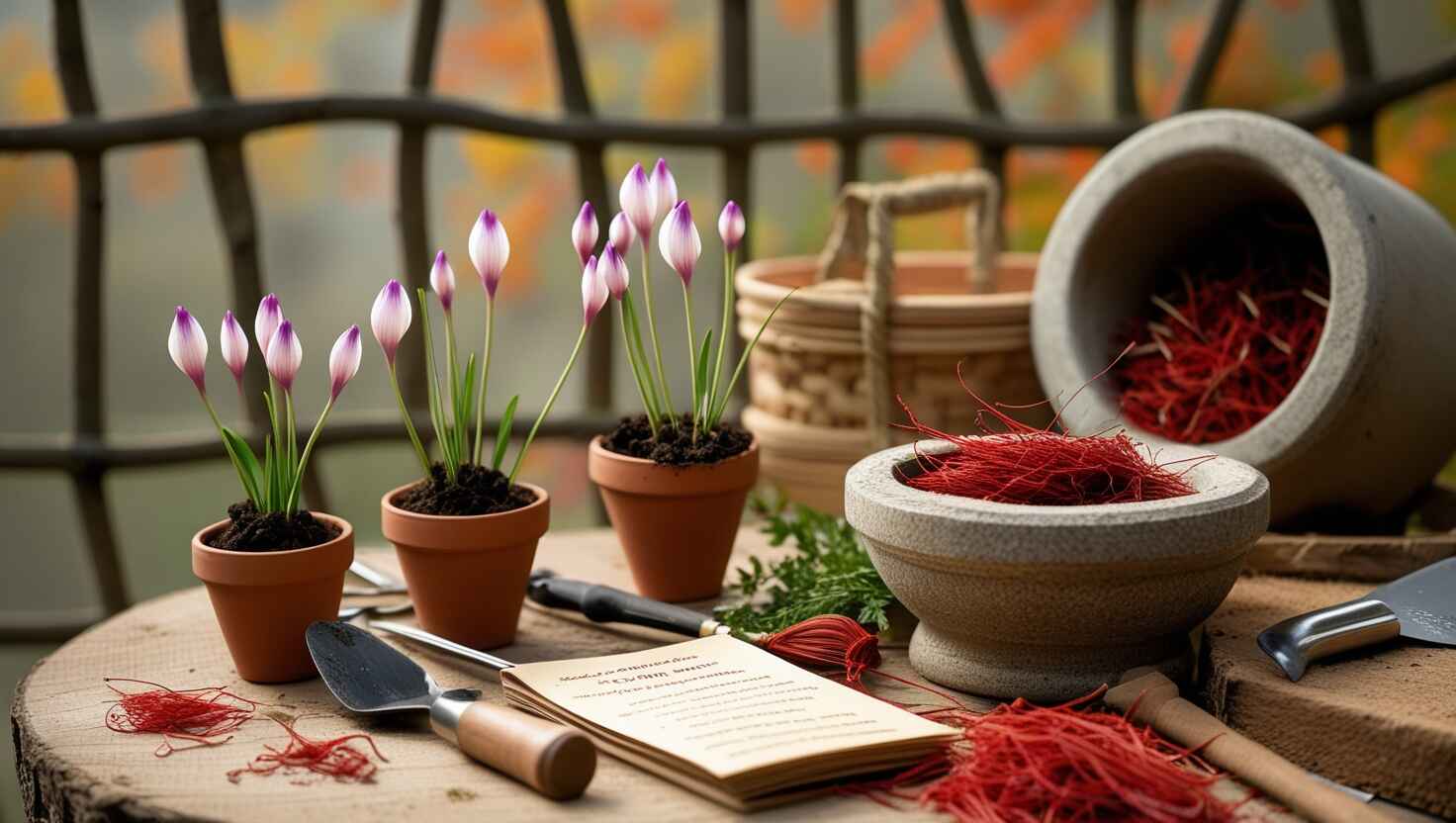Saffron, often called “red gold,” is revered for its distinctive flavor, vibrant color, and incredible health benefits. It is one of the most expensive spices in the world, not because it’s rare, but due to the labor-intensive process required to produce it. With the rising interest in sustainable living and gardening, more people are opting to grow saffron at home. This trend isn’t just economical—it’s also deeply rewarding. Growing saffron at home ensures you get the freshest spice while allowing you to control its quality and avoid the hefty price tags. Let’s dive into how you can grow saffron yourself at home.
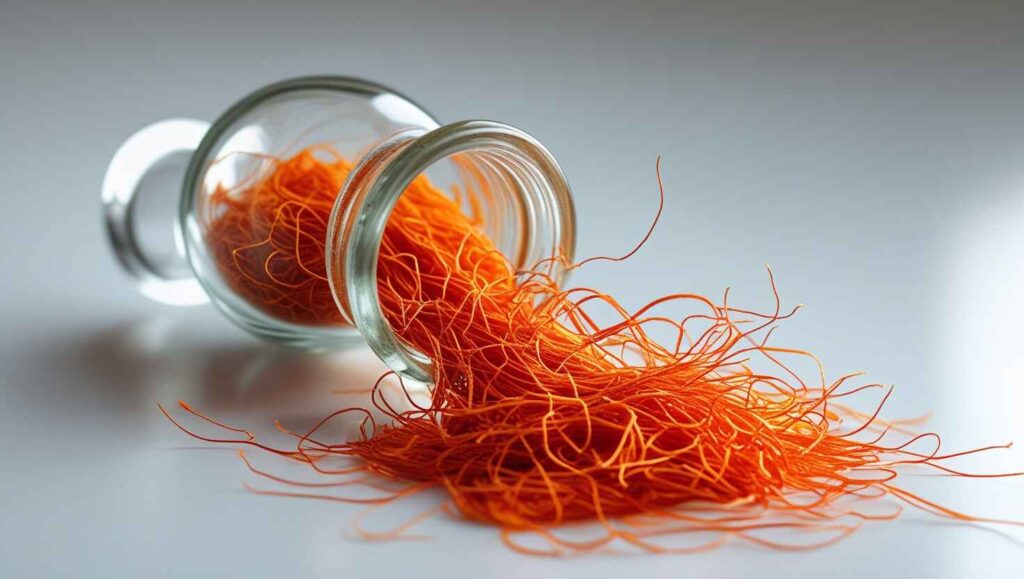
Understanding Saffron Crocus
What is Saffron Crocus?
The saffron crocus (Crocus sativus) is a beautiful, autumn-blooming flower that produces the world’s most prized spice. This perennial plant is part of the iris family and thrives in sunny, well-drained conditions. Its delicate purple petals and red stigmas are iconic. The spice saffron is derived from these stigmas, which are carefully harvested and dried. Interestingly, the saffron crocus does not grow at home from seeds but from corms (bulbs). These corms multiply underground, allowing for ongoing harvests year after year. Despite its exotic reputation, saffron crocus can be grown in many home gardens with the right care.
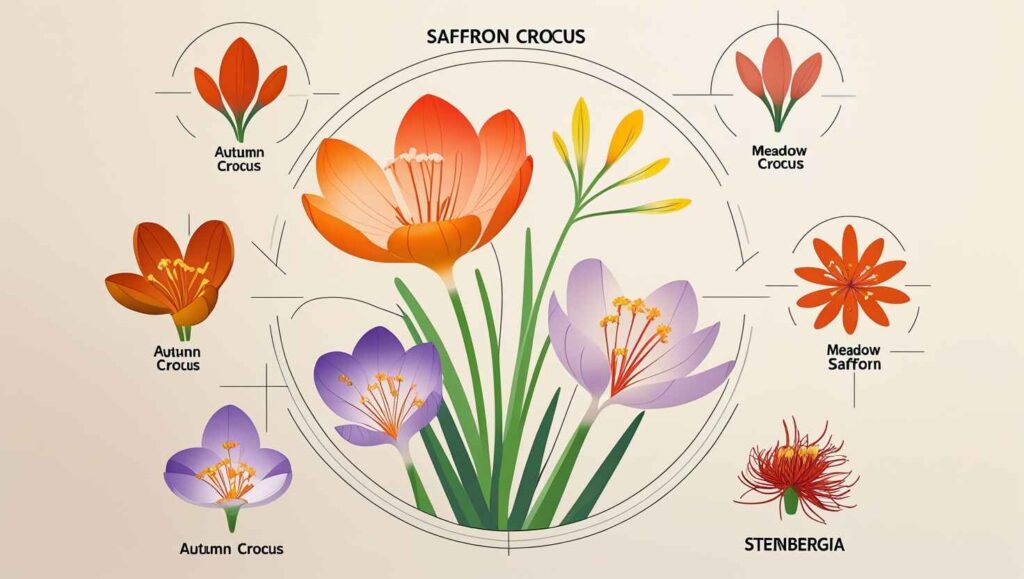
Characteristics of Saffron Plants
The saffron plant is as fascinating as it is stunning. Its vivid purple flowers bloom in fall, creating a striking contrast with the three bright red stigmas at the center. These stigmas are the source of saffron spice. The plant grows about 4–6 inches tall and has narrow, grass-like leaves. It prefers a sunny spot and thrives in well-draining soil. Unlike many flowering plants, the saffron crocus is dormant in summer and bursts to life as the weather cools. Its unique flowering cycle and vibrant appearance make it a standout addition to any garden.
Optimal Conditions for Growth
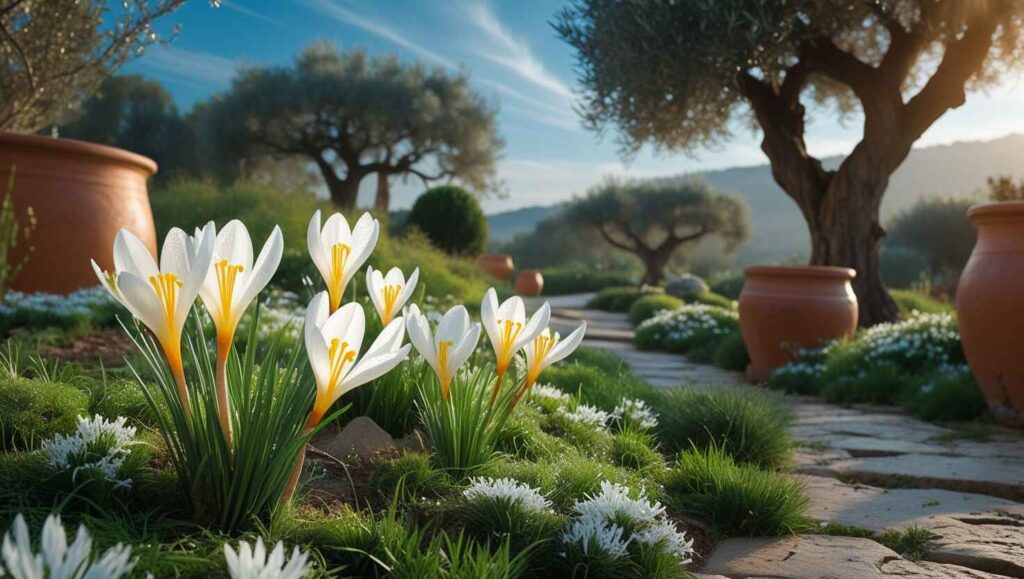
Native Regions and Environmental Preferences
Saffron crocus hails from the Mediterranean region, where it thrives in dry, sunny climates. It’s well-suited to areas with hot, arid summers and mild, wet winters. While its native conditions might seem specific, the saffron crocus is surprisingly adaptable. With well-drained soil and adequate sunlight, it can flourish in various regions, including temperate climates. In colder areas, planting in containers and providing winter protection is essential. Understanding its natural habitat helps recreate the ideal growing environment, ensuring a healthy crop of vibrant saffron flowers in your garden or home.
See More: Can Tulips Bloom Twice in One Season?
Step-by-Step Guide on Growing Saffron at Home
1. Choosing the Right Saffron Bulbs
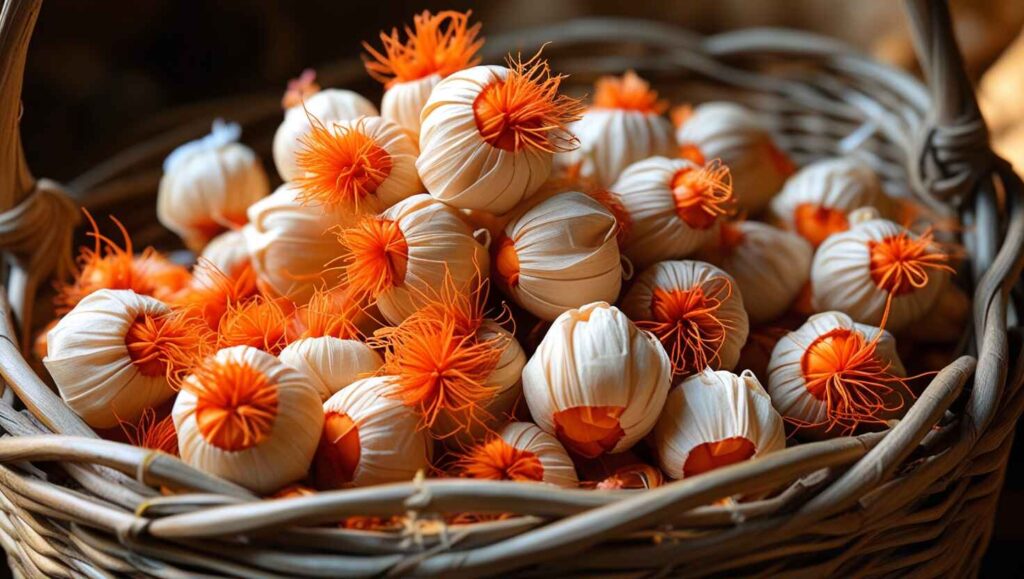
The first step to success is selecting high-quality saffron corms. Healthy corms are firm, free of blemishes, and slightly larger in size. These attributes ensure robust growth and abundant flowering. Reputable suppliers or specialized nurseries are the best sources for saffron bulbs. Avoid corms that appear moldy, soft, or unusually small, as they might fail to produce flowers. A good bulb is the foundation of a thriving saffron plant. Investing in premium corms sets the stage for a bountiful harvest and ensures you get the best results from your efforts.
2. Ideal Planting Conditions
Saffron thrives in well-draining, sandy, or loamy soil enriched with organic matter. Avoid clay-heavy soil, as it retains water and can cause bulb rot. Choose a sunny spot in your garden, as saffron needs at least 6–8 hours of direct sunlight daily. The plant prefers a Mediterranean climate, with dry summers and mild winters. If you live in a region with harsh winters or excessive rainfall, consider planting saffron in raised beds or pots to protect the bulbs. Creating the right environment is crucial for the health and productivity of your saffron plants.
3. Planting Saffron Bulbs
Planting saffron bulbs is straightforward. Start by loosening the soil to improve aeration and drainage. Dig small holes about 3–4 inches deep, spacing the bulbs 4–6 inches apart. Place each bulb with its pointed end facing upward, ensuring it sits firmly in the soil. Cover with soil and water lightly. Late summer to early fall is the ideal time to plant saffron, giving the bulbs enough time to establish roots before blooming in autumn. A little effort during planting ensures a stunning display of flowers and a rewarding saffron harvest.
4. Caring for Saffron Plants
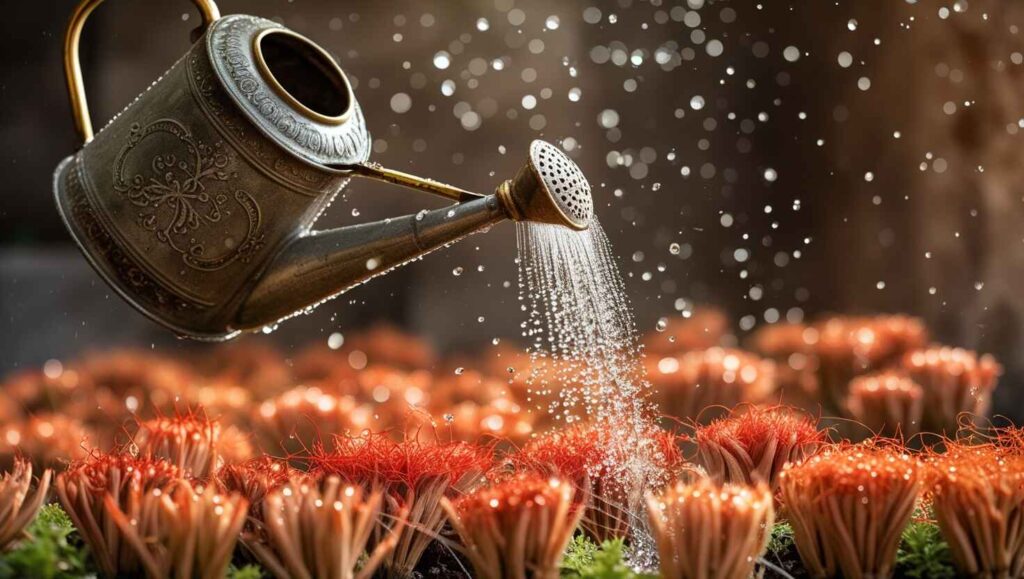
Caring for saffron plants involves regular but moderate attention. Water the bulbs immediately after planting, but avoid overwatering to prevent rot. Once established, saffron requires minimal watering. Fertilize sparingly using organic compost or a balanced fertilizer to nourish the soil. Protect your plants from pests like rodents and aphids using natural repellents or netting. During winter, apply mulch to insulate the bulbs from extreme cold. With proper care, saffron crocus thrives, producing beautiful blooms and high-quality stigmas for years to come.
5. Growing Saffron Indoors
Indoor saffron cultivation is perfect for those in colder climates or with limited outdoor space. Use containers at least 6–8 inches deep with good drainage holes. Fill the pot with sandy, well-draining soil and plant the bulbs as described earlier. Place the pots in a sunny window or under grow lights to provide 6–8 hours of light daily. Keep the indoor temperature between 15–20°C (59–68°F) for optimal growth. With careful attention to light and temperature, indoor saffron plants can produce vibrant blooms and fragrant spice.
Harvesting and Storing Saffron
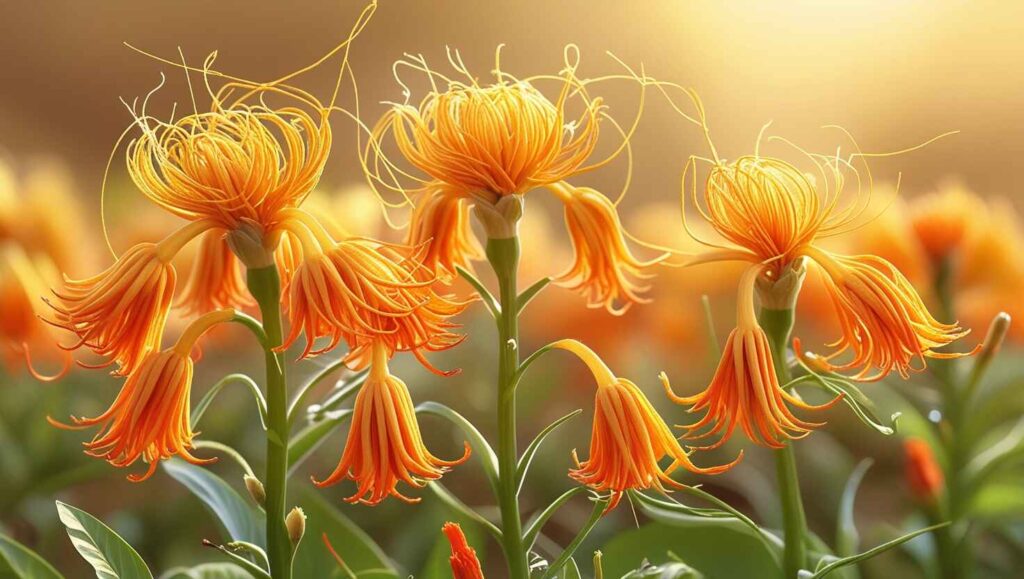
1. Identifying the Right Time to Harvest
Harvesting saffron requires patience and precision. The flowers bloom in autumn, and the best time to harvest is early morning, just as the flowers open. Look for bright red stigmas in fully bloomed flowers. Timely harvesting ensures the best quality saffron, as waiting too long can reduce its flavor and potency. Being attentive to the flowering phase helps maximize your harvest.
2. Harvesting Tips
To harvest saffron, gently pluck the three red stigmas from each flower using tweezers or your fingers. Handle the stigmas carefully to avoid damage. Harvest flowers daily during the blooming season, as they only last a short time. Collecting the stigmas when they’re fresh ensures optimal flavor and aroma. This meticulous process is part of what makes saffron so special.
3. Drying and Storing Saffron
Drying saffron is key to preserving its quality. Spread the stigmas on a clean paper towel in a warm, dry area for a few days. Alternatively, use a food dehydrator on a low setting. Once dried, store the stigmas in an airtight container, away from light and moisture. Proper storage enhances saffron’s shelf life, maintaining its vibrant color, aroma, and potency for up to two years.
Common Challenges in Growing Saffron
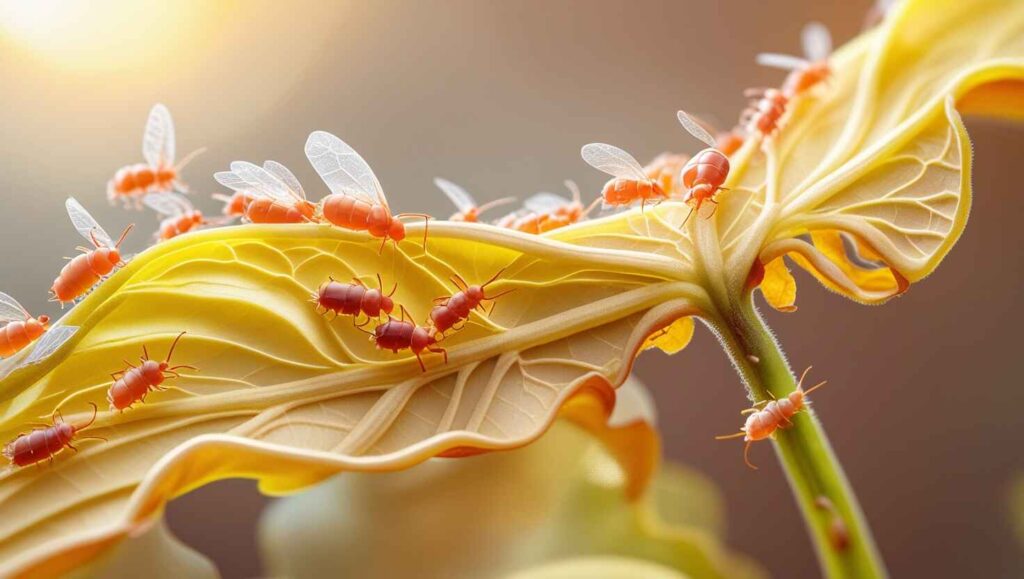
1. Bulb Rot
Bulb rot is a common issue caused by overwatering or poorly draining soil. Excess moisture leads to fungal growth, which can decay the bulbs and hinder plant development. To prevent this, always plant saffron corms in well-draining soil and avoid waterlogged conditions. Adding sand or organic matter to the soil can improve drainage. Water sparingly, especially during the dormant summer months, when the bulbs don’t require much moisture. Keeping an eye on soil conditions and watering habits can significantly reduce the risk of bulb rot, ensuring healthy growth and a thriving saffron crop.
2. Pest Issues
Pests like rodents and aphids can threaten saffron plants. Rodents may dig up the corms, while aphids suck sap from the leaves, weakening the plant. To deter rodents, use netting or place corms in raised beds with protective barriers. For aphids, introduce natural predators like ladybugs or spray the plants with a mixture of water and mild soap. Keeping the planting area clean and removing debris can also reduce pest infestations. With proactive care, these issues can be managed, allowing your saffron plants to flourish without major interruptions.
3. Insufficient Blooming
If your saffron plants fail to bloom, the issue could be related to poor planting conditions, low-quality bulbs, or inadequate care. Ensure the bulbs are planted in well-draining soil and receive full sunlight. Overcrowding can also hinder blooming, so make sure to space the bulbs adequately. Fertilizing with a balanced, organic fertilizer can provide the nutrients needed for healthy flowers. Additionally, avoid disturbing the bulbs during their growing season. By addressing these factors, you can encourage vibrant blooms and enjoy a successful saffron harvest.
Benefits of Growing Saffron at Home
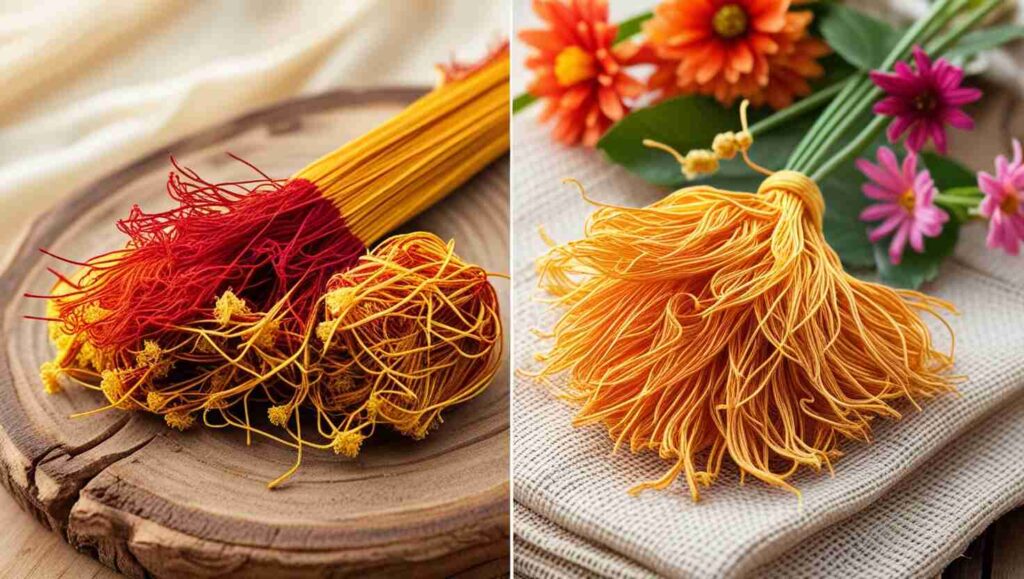
Economic Benefits Compared to Purchasing Saffron
Growing saffron at home offers significant cost savings. A small jar of high-quality saffron can cost hundreds of dollars due to its labor-intensive production. However, by cultivating saffron yourself, you can produce a comparable amount at a fraction of the cost. While the initial investment in bulbs and soil preparation may seem high, the corms multiply over time, allowing you to expand your harvest without additional expenses. Home-grown saffron is not only economical but also a sustainable way to enjoy this luxurious spice.
Culinary Uses: Homemade Saffron for Recipes
Saffron’s rich flavor and aroma make it a prized ingredient in various cuisines. Home-grown saffron adds a personal touch to dishes like paella, biryani, and risotto, elevating them with its unique taste and vibrant color. Using freshly harvested saffron ensures maximum flavor, as store-bought options may lose potency over time. With your own supply, you can experiment with new recipes and enhance your favorite dishes, all while enjoying the satisfaction of using spice you’ve cultivated yourself.
Medicinal Properties of Saffron
Saffron is more than just a culinary delight—it’s also renowned for its medicinal properties. Rich in antioxidants, saffron is known to improve mood, enhance memory, and support overall well-being. Studies suggest it may help reduce symptoms of depression and anxiety. Saffron also promotes heart health and may aid in regulating blood sugar levels. By growing saffron at home, you have access to a fresh, natural source of this powerful spice, allowing you to incorporate its health benefits into your daily routine with ease.
See More: What is The Foliage Color Changes of a Peony
FAQs on Saffron Cultivation at Home
Can Saffron Grow in All Climates at Home?
Saffron crocus thrives in Mediterranean climates with hot, dry summers and mild winters. However, it can adapt to other regions with proper care. In colder climates, planting in containers and protecting the bulbs during winter is essential. While saffron prefers well-draining soil and full sunlight, gardeners in less ideal conditions can mimic these requirements using raised beds or indoor setups. With thoughtful adjustments, saffron can be successfully grown in a variety of environments.
How Much Saffron Can You Harvest from a Single Bulb?
Each saffron crocus flower produces three red stigmas, and a single bulb typically yields one or two flowers in its first year. Over time, as the corms multiply, you can expect a more abundant harvest. It takes approximately 150–200 flowers to produce one gram of dried saffron. While this may seem modest, growing multiple bulbs and nurturing them properly can lead to a satisfying and worthwhile yield for home use.
Can Saffron Grow Hydroponically at Home?

Yes, saffron can be grown hydroponically, although it requires careful attention to environmental controls. In a hydroponic system, saffron bulbs are planted in a substrate like coconut coir or perlite and provided with nutrient-rich water. The system must maintain adequate light, temperature, and humidity levels to mimic natural conditions. Hydroponic cultivation can be an efficient method, especially for those with limited space, but it requires some expertise and setup costs to achieve optimal results.
Conclusion
Saffron, the “king of spices,” is a rewarding plant to grow at home. Beyond its culinary and medicinal uses, cultivating saffron brings the joy of nurturing a rare and exquisite crop. By following the outlined steps, you can create the perfect environment for saffron crocus to thrive, whether in your garden or indoors. From selecting quality bulbs to harvesting the vibrant red stigmas, each stage of the process connects you to nature in a meaningful way. Embrace the challenge and satisfaction of growing your saffron, and enjoy the unique benefits of this prized spice in your everyday life.

